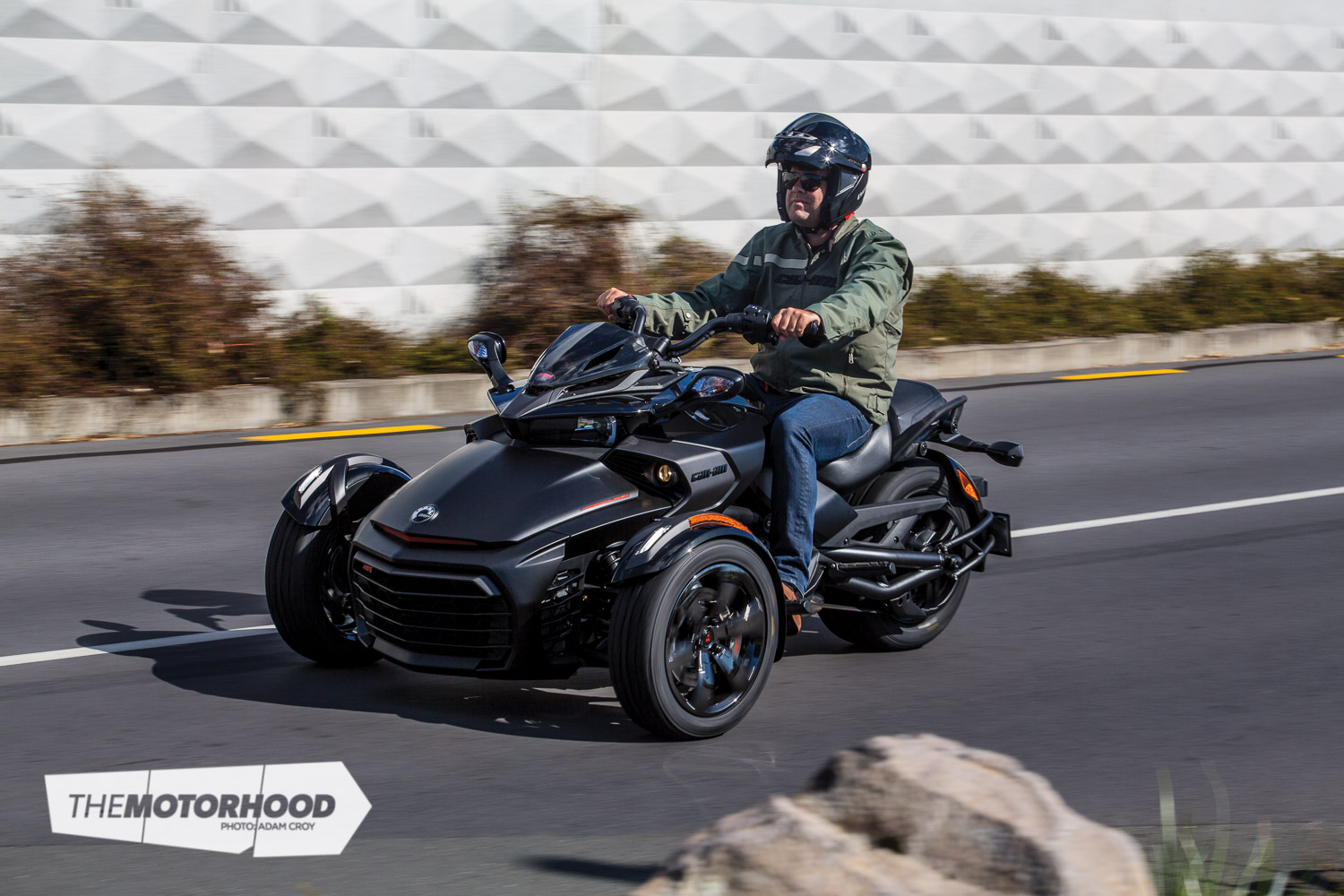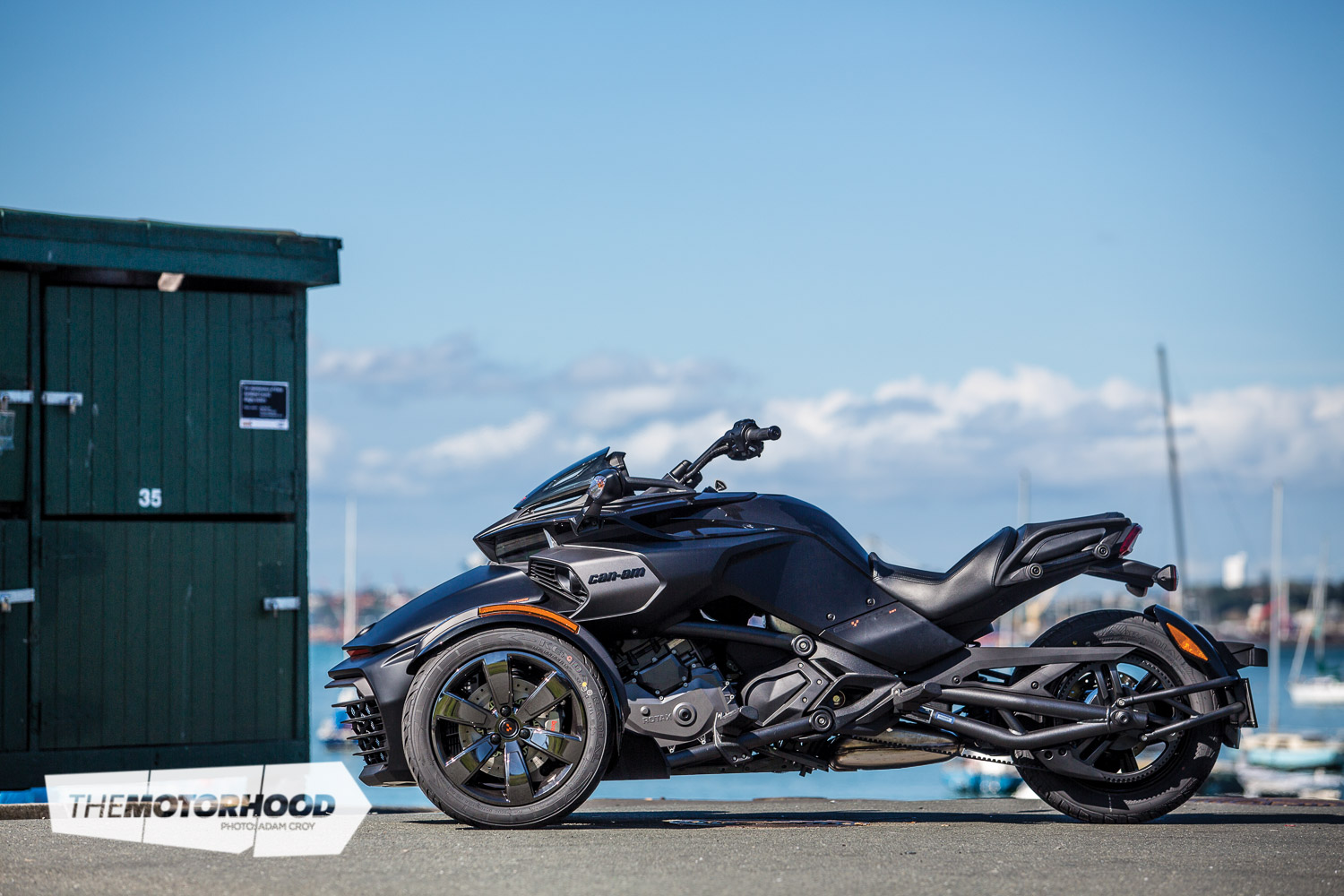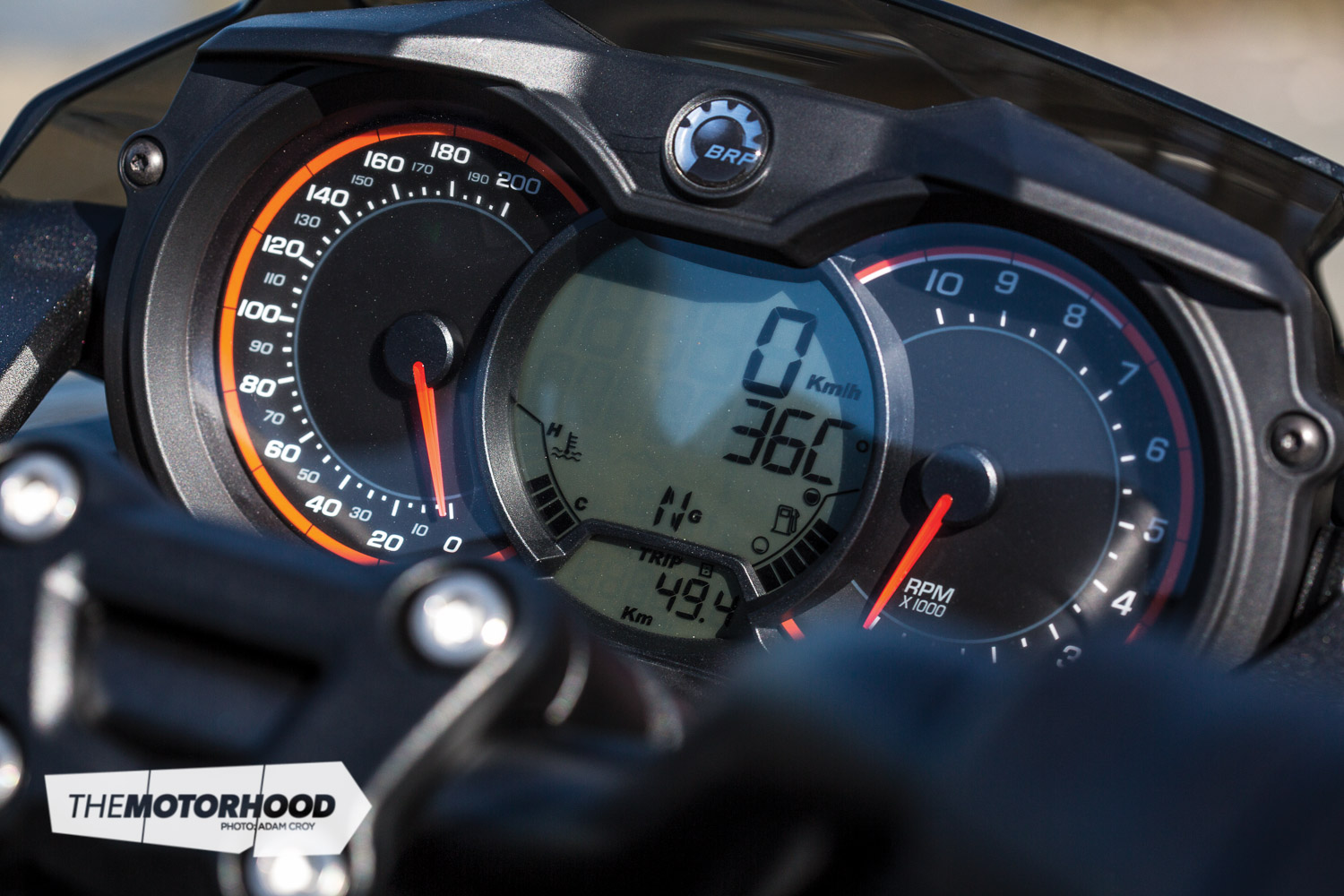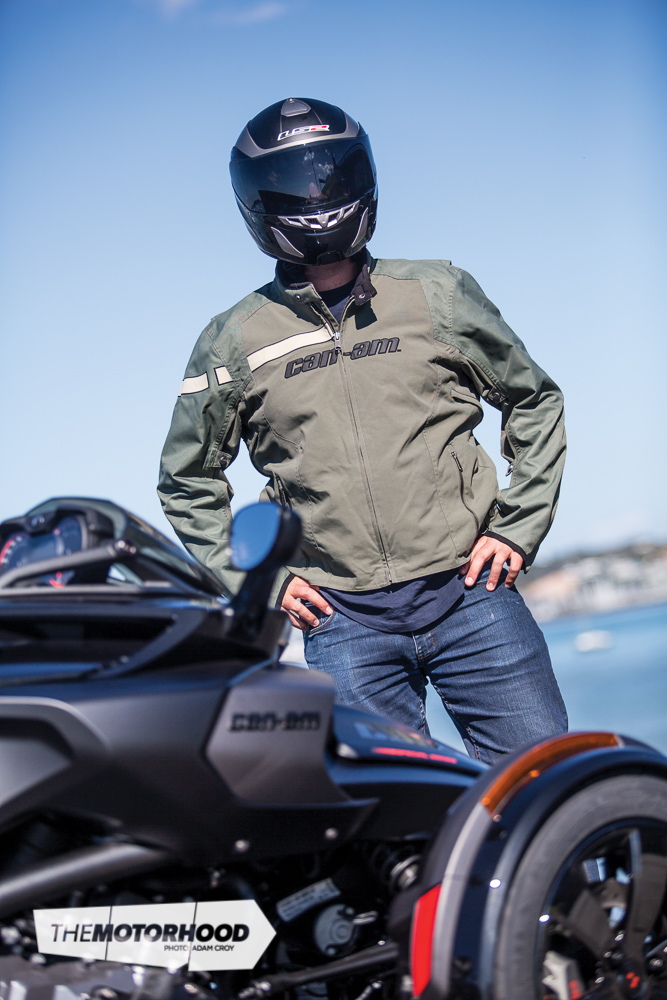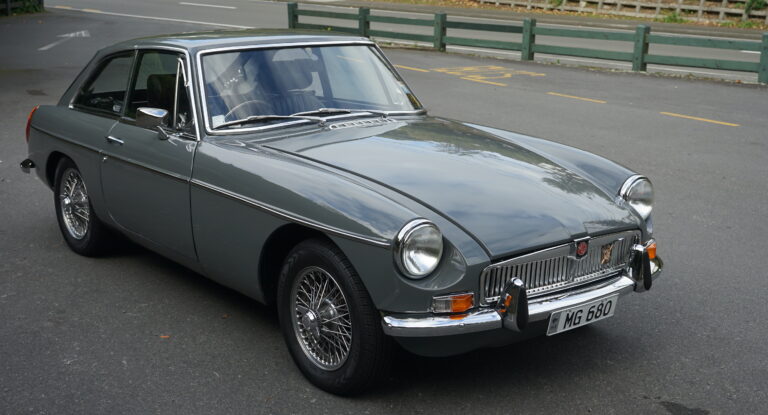
Sometimes late at night, once the baby is asleep, the dog has found a spot on the couch (her fur will stick to for all eternity), and the pub across the road has kicked out the final drinkers of the evening, I lie in bed and wonder. I wonder if I could be a biker. I could be a biker, I think. I could ride a Harley-Davidson and strike fear into the hearts of fellow motorists. I could tackle entire continents on a big, heavily laden BMW cruiser alongside Ewan McGregor and Charley Boorman. Sometimes, I even imagine hitting speeds upwards of triple the open-road speed limit while hunched over a fat-rear-tyred Ducati superbike. Then, with a start, I awake as the baby cries, the dog barks at the cat we haven’t seen for a year, the publican empties the empties into the skip, and I come to my senses. I’ll never be a biker; I’ve got things I need to be alive for. If only there was another way.
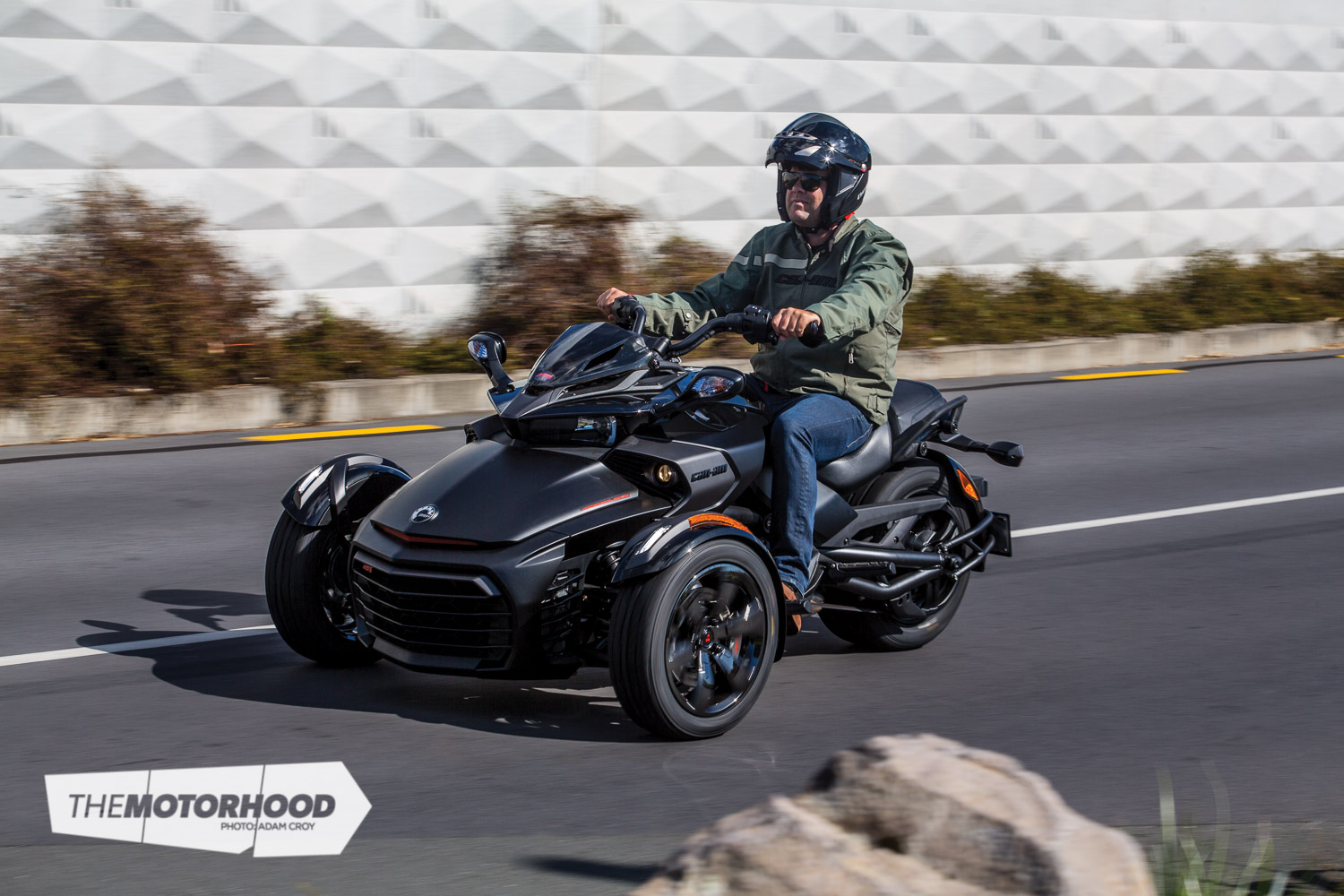
Solution
When you think of a trike, you’ll imagine a single wheel at the front and two at the back. You’ll see Billy Connolly riding across America with his monkey bars and hear his Scottish lilt. I shudder when I remember that horrifying pre–quad bike three-wheeler my uncle had on the farm, which would tip over if a sheep so much as coughed in its direction.
The Can-Am Spyder is a three-wheeler, but with two wheels at the front and one at the back — arse about face, if you will — that can be driven on a car licence. It’s built by a company called Bombardier Recreational Products (BRP) that you’ll know from its Sea-Doo jet skis and Ski-Doo snowmobiles. And that in itself should explain not only the heritage, but the ability of these machines.
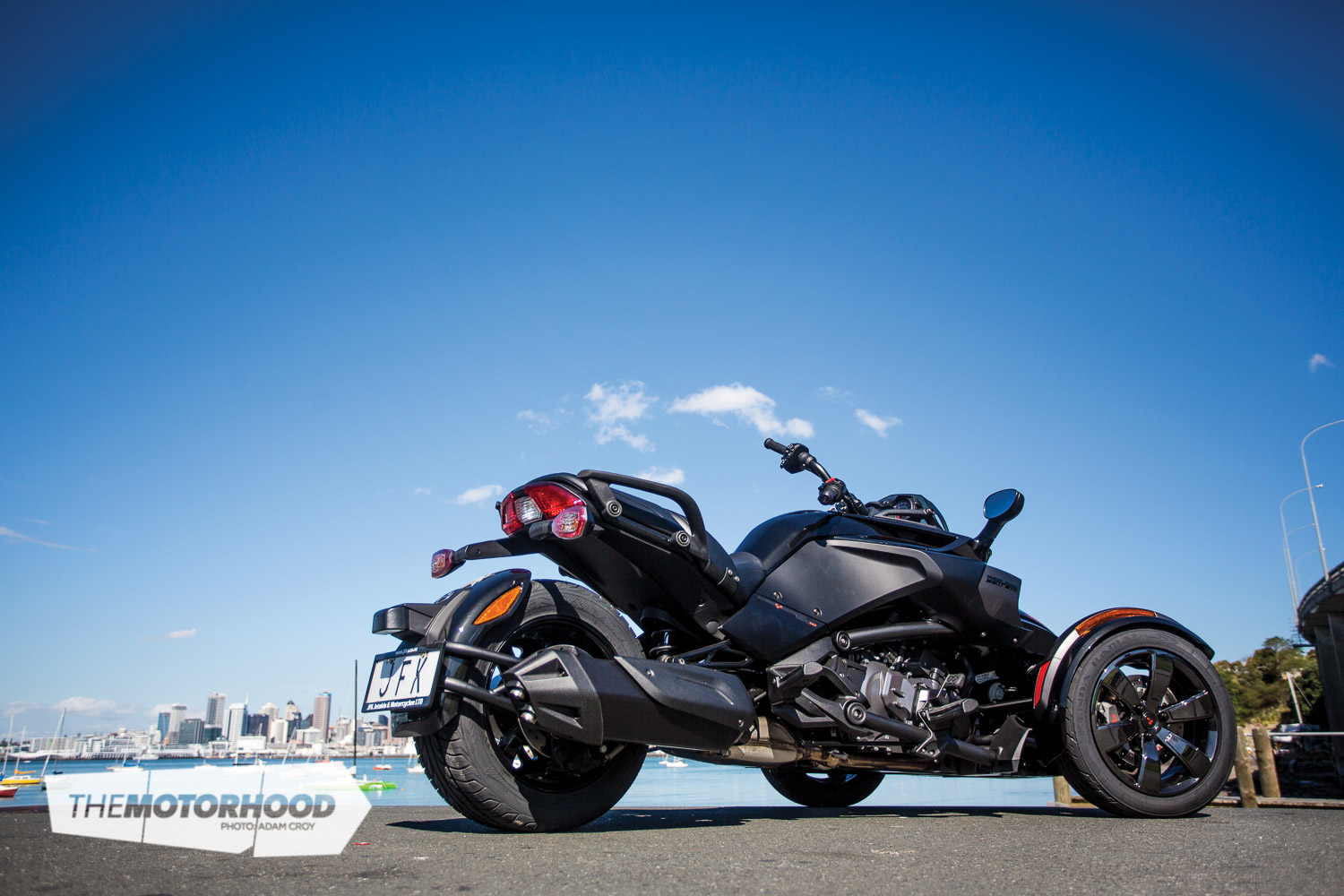
Excitement
When we turned up at JFK Powersports’ Mount Wellington showroom to collect the Spyder for a day’s riding, I must admit, I was sceptical. I was aware of the Spyder, I had seen people riding around on them, but I wasn’t sure what to make of them. The model we tested was the newly released F3-S Special Series. It’s all black with aggressive styling and racy-looking cowlings and exhaust tips. It actually looked quite good. As we were talked through the Spyder’s dos and do-nots, I started to experience something I hadn’t anticipated: excitement. I was quite looking forward to giving this little rocket a hoon.
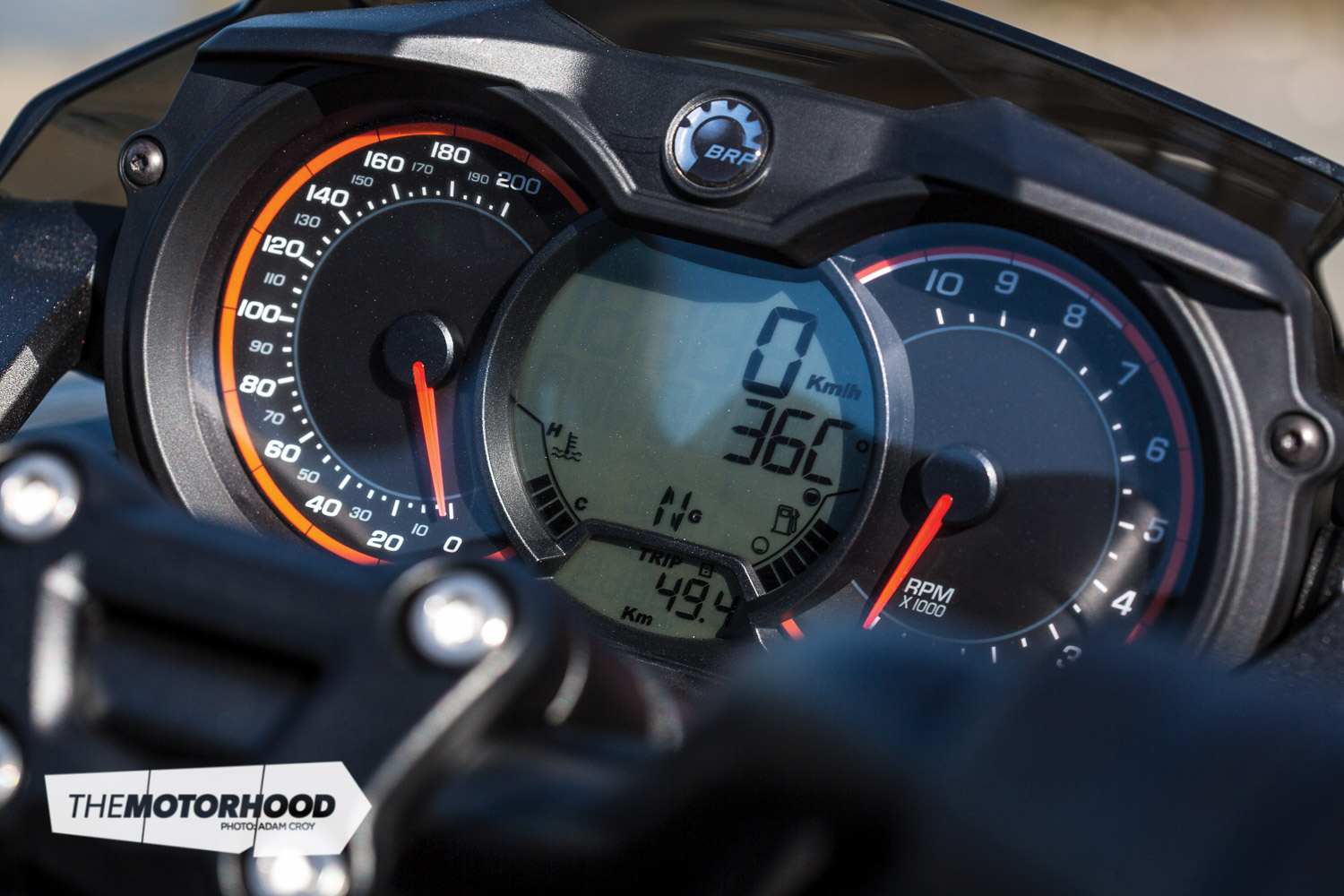
I was told that the fact I turned up in four wheels rather than on two was a bonus, as bike riders try to ride the Spyder like a bike, but, alas for the two-wheeled purist, this three-wheeler cannot be leaned into corners or used to weave through traffic. The Spyder doesn’t require a bike licence (or even a helmet, apparently, although we can’t imagine going without), so it’s open slather for us, the car folk.
Once we set off, we were straight onto Auckland’s Southern Motorway. I’ve spent thousands of hours on this stretch of road, all monotonous, all inside a steel, aluminium, and glass shell offering me protection from the elements and giving me the ability to ignore other road users (as only we Auckland drivers can do with such skill). On the Spyder, this is not the case. You’re exposed; you are traffic. Suddenly, those unfounded thoughts that soothe me to sleep of the wind blowing through my hair (it really must’ve been a dream) as I ride carefree across the land were reality. But I felt the risk was minimized somewhat.
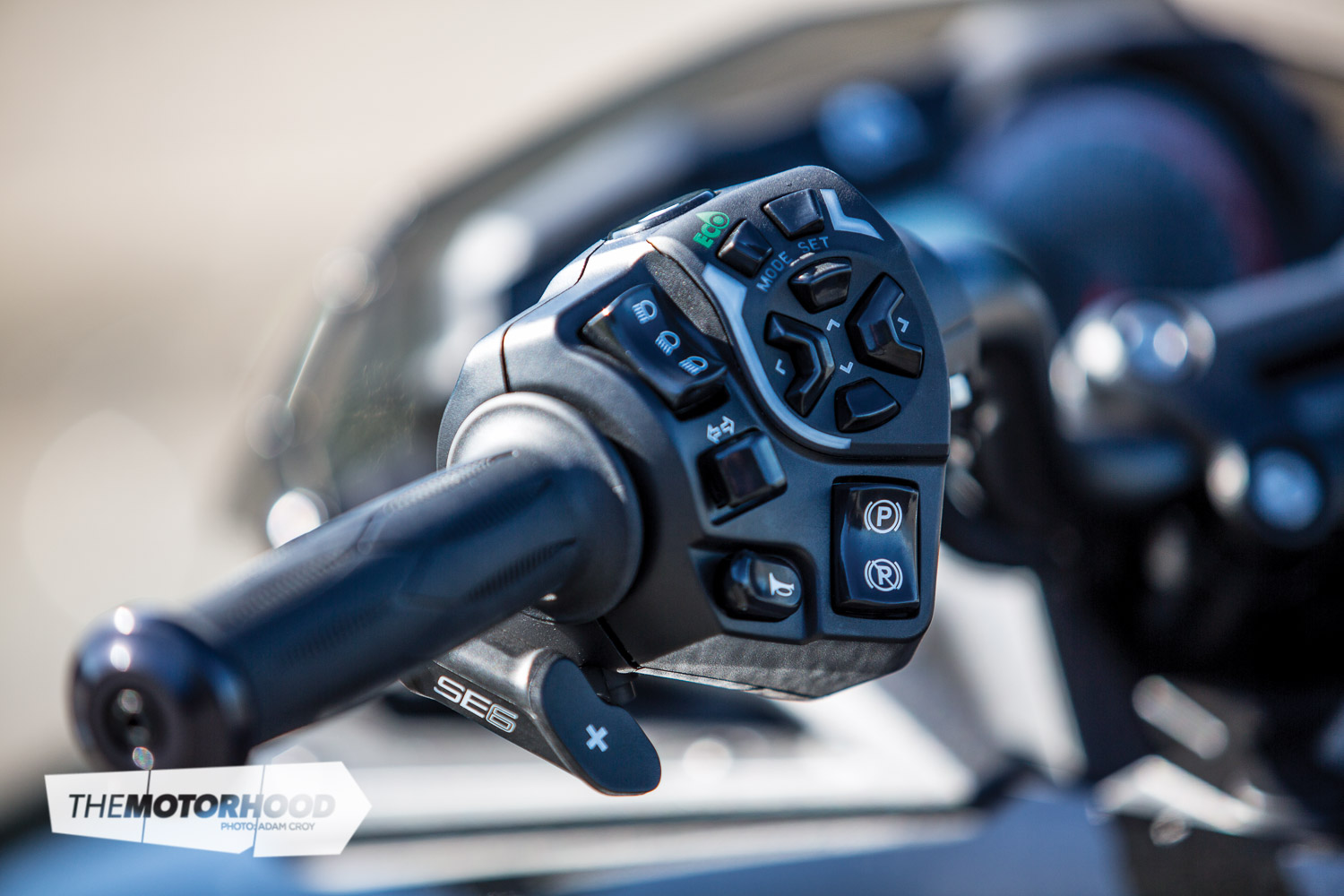
Here I was, upon my trusty steed, but without a chance of dropping it at the lights or of hitting a patch of oil and having it skid from underneath me. And that’s the beauty of these Spyders. As you’re riding along at highway speeds, you set your cruise control, and, safe in the knowledge that your stability and traction control have things in the bag, you can enjoy the experience of being on a bike without the constant thought that death is winking at you from the passenger’s seat of the milk tanker coming in the other direction.
Riding the Spyder is most similar to riding a jet ski or a horse. You’re sitting upright with adjustable forward pegs to rest your feet on, making the ride position quite comfortable. There is one foot brake that makes all three wheels stop via an ABS braking system and powerful Brembo rotors and pads.
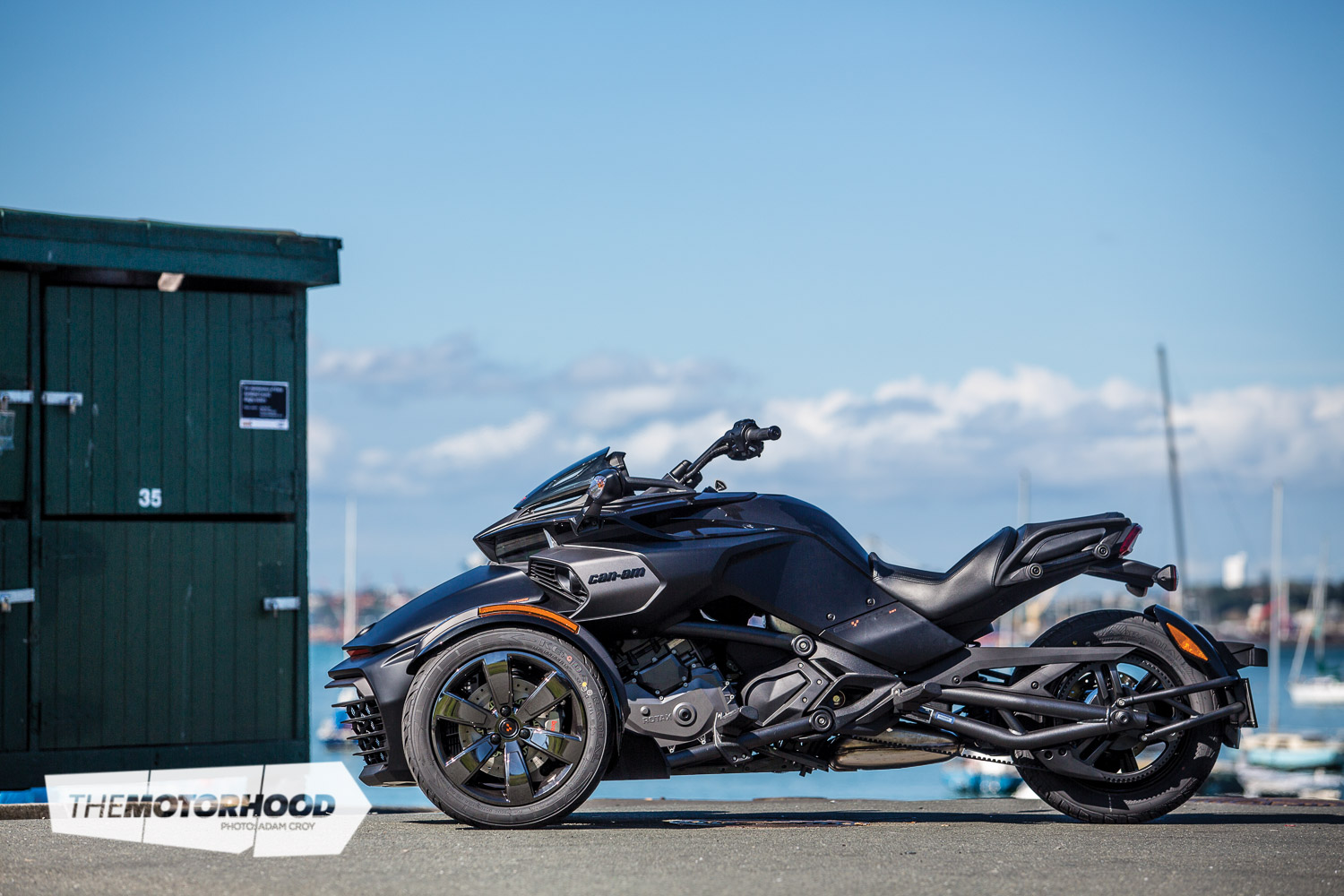
Plenty powerful
The F3-S Spyder we tested was powered by an in-line-three 1300cc Rotax engine putting out 86kW, paired to a six-speed semi-automatic transmission (you change up the gears, and it’ll change down for you as your speed reduces). This sportier version of the Can-Am cruiser was plenty powerful, with excellent mid-range and a high powerband. We did notice a small amount of understeer in dry conditions around tight corners, but that may well have been rider-centric, and we think you’d get used to the limits of the Spyder quickly enough. It’s a lot of fun to ride, it takes the corners well, and feels as if you could ride a reasonably long distance without losing all feeling in your extremities. There is a small storage locker in the front for car keys and a thumb tack, and it’s set up to carry a pillion passenger if your car is in the shop.
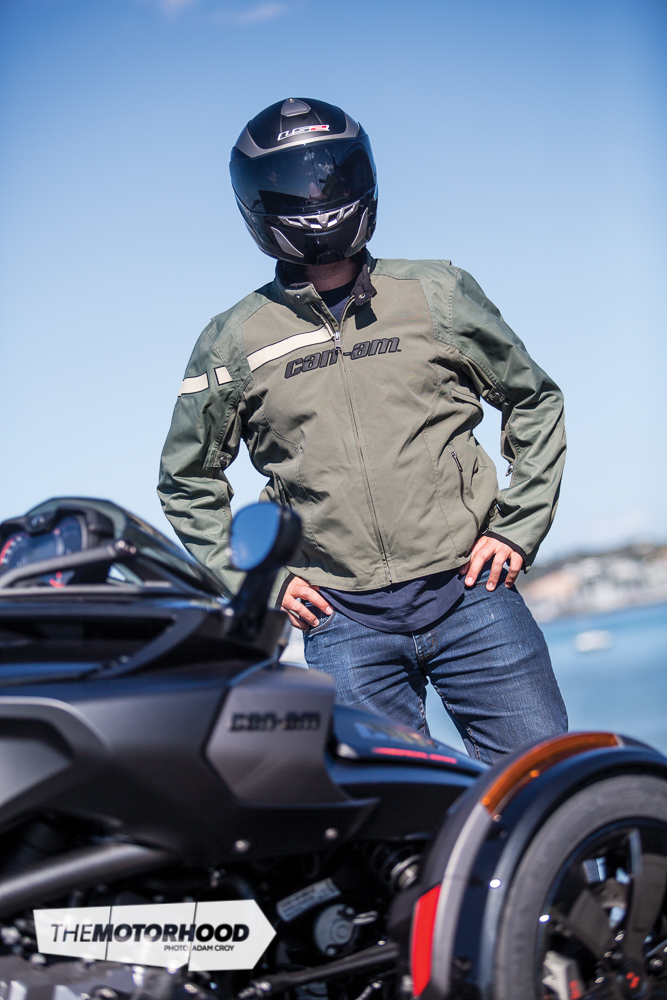
For everyone
So, who is the Spyder for? Well, based on our day out, it’s for everyone. We headed to the CBD for the photo shoot and were mobbed by people asking about power outputs and options, and followed by others from one shoot location to the next so they could get a better idea of how it worked. When stopped at the lights or in traffic, other drivers struck up conversations and wanted to know more about it. Given that you straddle (ha) the line between car and bike, you acquaint yourself with both and get smiles and appreciation from all. I like the Can-Am Spyder. It made me feel bad to the bone just enough to know I’m not at all past it.
2016 Can-Am F3-S
- Unique S-trim signature
- Machined deep black high-gloss front wheels
- Premium front fenders with LED running lights
- Electronic cruise control
- PLUS ALL SPYDER F3 FEATURES
- New cruising-riding position and muscle design
- Exclusive UFit system for custom-fit peg and handlebar positions
- Rotax 1330 ACE in-line three-cylinder engine
- New line-up colours and first-ever Special Series
- Six-speed transmission, manual or semi-auto, both with reverse
- Vehicle Stability System with ABS, traction control, and stability control
- High-performance Brembo brakes
- FOX Podium shocks
- Eco-mode smart assist
- Six-spoke metallic silver front wheels
- Anti-theft system
- Power steering
- Front storage compartment
- Price as tested: $34,090 incl. on-road costs
To book a test ride: Contact JFK Powersports on 09 276 6817
Pick up your print copy or digital copy of New Zealand Classic Car Issue No. 306 below:


